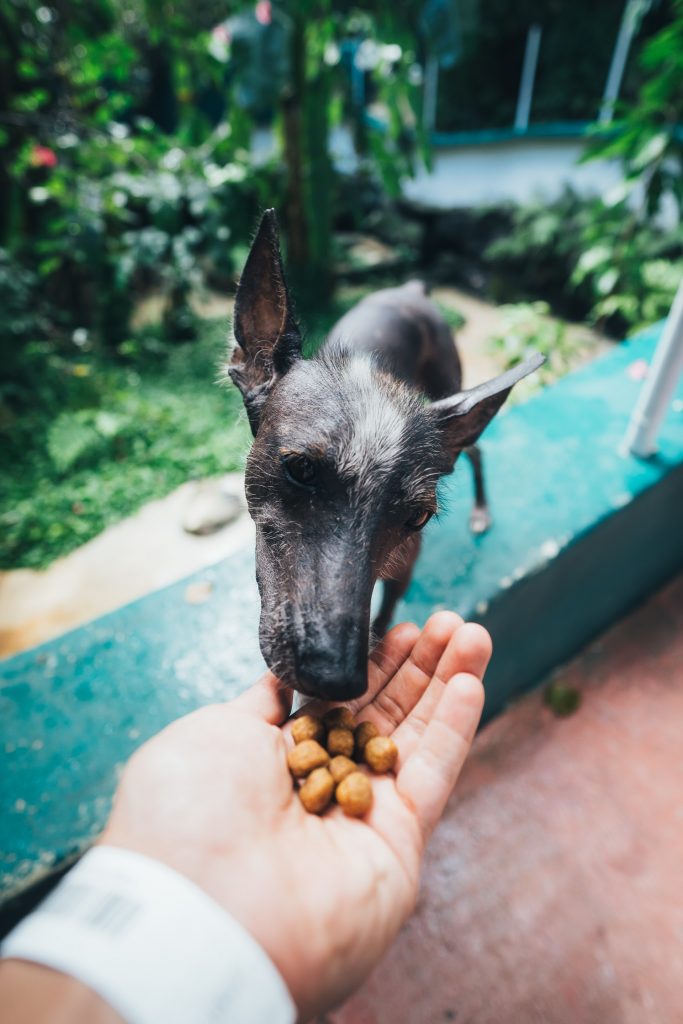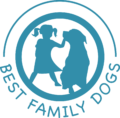How Do Dogs Body’s work?
Dogs are non-obligated carnivores. What was that?! That means they like meat, they can eat it, but they do not necessarily need it. Dogs function similar to humans. Understanding your dog’s nutritional needs is very important to giving your dog the best overall health. Dogs need certain elements to their diet called, amino acids. Amino acids are building blocks for proteins which facilitate our body function; creating energy for muscle development and maintenance, and maximizing brain function. There are 10 amino acids that dogs must get from their diet, just like us. These amino acids are:
- Arginine
- Histidine
- Isoleucine
- Leucine
- Lysine
- Methionine
- Phenylalanine
- Threonine
- Tryptophane
- Valine
These amino acids are ESSENTIAL AMINO ACIDS, which means our bodies, and our dogs’ bodies can not synthesis these amino acids independently and we both need to acquire them from outside sources – our diets.
The interesting thing is that there are 23 amino acids in total. Both dogs and humans make the other 13 amino acids instinctively, independent from our diets. We will return to why these amino acids are so important later in our discussion regarding the quality of dog food we chose for our dogs.

Dog Food Ingredients
If we take an average dog food from the local super market, just to look at the ingredients we see a list with words like “corn meal, whole grain sorghum, chondroitin, glucosamine, chicken or meat by-product, whole grain barely, beet pulp, dried egg product, flax meal, etc”. Just to name a few key ingredients, these can be listed in various orders on the dog food bag. Usually the first ingredient listed is found in the highest quantity and than the list goes on to the ingredient of least amount in the product.
Dog Food Dictionary
So what are the problems with these ingredients?
Let’s take them in order I have listed them here:
- Corn meal – Although some pet food brands say corn is “easily digestible”, corn is actually wrapped in a thick cellulose shell. Dogs can not digest cellulose of any kind, especially corn because that cellulose is thicker than cellulose found in other foods such as peas. The other reason corn is hard on the dogs digestive system is that it is high on the glycemic index. The glycemic index is a tool used by dieticians and nutritionists to measure the sugar released in foods when they are metabolized. Scoring high on the glycemic index means other organs that aid in digestion, such as the pancreas, have to secrete more insulin to counter act the higher sugar levels. On occasion, this is ok, but keeping the body under constant stress of releasing all that insulin to combat that much sugar after every meal, in the long term can lead to the insulin becoming insufficient in breaking down the sugar and therefore can lead to diabetes in your dog.
- Whole Grain Sorghum – Low nutritional value, similar to corn. Whole grain sorghum is grown as a feed grain, to feed livestock. So, it’s easy to grow lots, fast and affordably. Food sources that are fast, grown in mass quantities and affordable are not synonymous with quality.
- Chondroitin & Glucosamine – Both of these supplements are known to help with inflammation and prevent damage to joints caused by osteoarthritis. These are natural substances that help repair cartilage and provide some Omega 3 fatty acid benefits. Good to have in your dog’s food, especially larger, more active breeds. But any breed can benefit.
- Chicken By-Product Meal – Any by-product meal is really what’s left over at the slaughter house. There are various levels of marketable meat products. There are products that are “edible”, “not intended for human consumption”, and “unfit for human consumption”. The various levels determine how the meat is treated after the slaughter, basically in regards to cleaning and refrigeration. What this means is your dog eats the left overs which contain chicken feet, livers, lungs, spleen, stomach, heads, undeveloped eggs, intestine, etc. All the parts left over from animals after the most nutritious parts have been used for humans. When the meal is animal-specific, for example, chicken meal, turkey meal, beef meal, it is better than non-specific meals such as meat meal, meat and bone meal, or animal by-product meal. You want to avoid non-specific animal by-product meals at all costs, chicken meal, beef meal, turkey meal and medium grade protein supplements but there are also top quality that are just plain simple, chicken, turkey, beef, etc – those are the best.
- Whole Grain Barely – This is a good source of grains.
- Beet Pulp – Used as a filler. Like corn, beet pulp is high on the glycemic scale, and should not be used constantly and long term.
- Dried Egg Product – An affordable protein waste product left over from the egg industry. Composed of non-shelled egg left overs. Similar to animal by-product meal.
- Flax Meal – An affordable way to press the flax oil out of the seeds. Sounds like it provides the high fiber benefits of flax seeds but does not provide the quality and is a poor source of fatty acids.
Identifying Low (L) Dog Food Quality
When manufactures cut corners to provide low quality meat products they deprive our dogs of good quality protein. As a result of poor nutrient value they add synthetic supplements. You will notice a lot of “L” ingredients on the end of the list. Synthetic supplements like “L-Lysine”, and “L-Tryptophan”. These are affordable ways for manufactures to bulk up low quality food with the essential amino acids not achieved in the poor quality meat. A dog food with good quality meat does not have to supplement amino acids and provides a well balanced diet with a variety of hardy fruits and vegetables.
How to Maximize Large Breed, High Energy Diet
Titan, a Weimaraner is a very high-energy sports breed. We initially started feeding him Iams. Can you believe it?! I learned a lot about dog food since owning such a large breed dog. We took Titan to the veterinarian in is younger days complaining that he ate his own stool and other dogs stool. Our veterinarian, Dr P, suggested scrambling an whole egg and adding it into Titan’s daily meals. Dr P was clear to make sure we also include the egg shell. As a human we think, that’s weird, why would we want the dog to eat egg shell? Read on to find out! Since this advice we have been, scrambling an egg every dinner and adding it to Titan’s meal with a crushed egg shell.
How To Feed A Dog On Budget
Adding your own additional nutrition to kibble maximizes the budget. You can buy more affordable food and bulk it up with a few of your own additional specialty foods. Or you can also buy high-quality food and not feel like you have to cook specialty dog meals all the time. This allows you the freedom to use scrambled egg and shell as a tasty treat!
How Much Calcium, Phosphorus and Selenium Does a Dog Need?
Various sources have various “doses” of how much of each element should be your dog’s daily intake requirement. The amounts are dependent on the dog’s size and weight, and age. Sources also list the recommended daily intake at the most minimally acceptable value for general health and nutrition. So keep in mind to look for clues in your research. When you read about daily intake focus on the dose per weight, per day, whether it’s a percentage and look for words like “daily minimum” or “daily maximum”. Consult your veterinarian for specific values for your dog. Remember size, weight, age and type of dog breed all need to be taken into consideration.
Dogs only need very small levels of phosphorus and selenium, but these elements are essential to help with maximum absorption of other elements such as calcium.
How Scrambled Egg and Shell Benefited Our Dog Titan
Titan got a scrambled egg every day for life. The Weimaraner is a large breed, athletic dog. The egg was provided to maximize his bone development. He had long legs, and needed strength and endurance. The protein in eggs is easily digestible. The easily digestible protein is easy on the stomach and decreases stomach upset. The additional calcium supplied in the egg shell is calcium carbonate, which is also high in calcium and also further soothes the stomach. It helped Titan stop eating his stool and other dogs stool. He was finally getting enough nutrition once we started bulking up his meals.
How to Evaluate Nutritional Success
In conclusion, not all dog food is created equally. You get what you pay for. Today you have plenty of options for organic and high protein foods from quality sources. There are also more affordable food options that you can add your own food too and make it very specialized to your dog’s nutritional needs. Understanding your dog’s nutritional needs helps you feed your dog well.
You will know your dog is getting enough when you notice your dog seems satisfied after eating, nuisance behavior will stop – like eating own stool, and your dog will have more energy and look healthier. You can easily see a healthy coat, less bad breath and clear eyes!
Has this changed your view of your dog’s nutrition?
